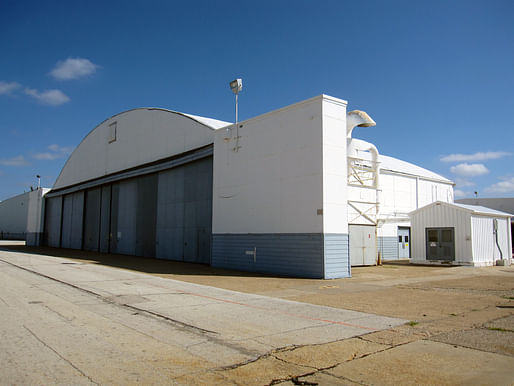
 The Field Study courses at the GSD are essentially architecture and urban design studios predicated on in-place economic, financial, and regulatory assumptions. This is where the creative, methodological processes of design meet real world constraints of development. Students from any school at Harvard are encouraged to enroll, bringing pupils from Harvard Kennedy School (HKS), Harvard Law School (HLS) and the like into groups with architects, urban designers, landscape architects, and urban planners from the Graduate School of Design (GSD). The result is consistently a plethora of creative, yet grounded ideas for solving difficult real-world urban conditions. The final research is presented to the stakeholders of the project to invoke a lively debate, muster public enthusiasm, or possibly even be implemented.
The Field Study courses at the GSD are essentially architecture and urban design studios predicated on in-place economic, financial, and regulatory assumptions. This is where the creative, methodological processes of design meet real world constraints of development. Students from any school at Harvard are encouraged to enroll, bringing pupils from Harvard Kennedy School (HKS), Harvard Law School (HLS) and the like into groups with architects, urban designers, landscape architects, and urban planners from the Graduate School of Design (GSD). The result is consistently a plethora of creative, yet grounded ideas for solving difficult real-world urban conditions. The final research is presented to the stakeholders of the project to invoke a lively debate, muster public enthusiasm, or possibly even be implemented.
Each semester, there are 2 field studies - one locally based around Boston, and the other, anywhere around the globe. This semester Professor Rick Peiser arranged for the local field study to focus on Chelsea Massachusetts, while the global field study was in Dallas, Texas. I joined the Dallas field study, and like everything else in Texas, the project is, well, bigger - 4.7 million square feet bigger to be exact. The former Chance Vaught Aircraft Plant started manufacturing P-51 fighters and B-24 bombers back in WWII, changed hands a bit, and finally closed last year. The opportunities for repositioning are tremendous, although, like all field studies, there are significant issues to be resolved.
 Chance Vought Aircraft Plant Aerial
Chance Vought Aircraft Plant Aerial
The seemingly easiest solution would be to lease out all 4.7 million square feet to a single manufacturing tenant. Minor tenant improvements to the most valuable buildings at $5- $10/sf would be all that is needed. But finding a tenant with such specific space needs at such a colossal scale is a global endeavor, and can take years. The alternative is redevelopment, repositioning, and adaptive reuse, with these solutions invoking a plethora of issues. After 60 years of heavy manufacturing the site was a bit contaminated before the Navy implemented site remediation actions. The contamination is now below state monitored Alternate Concentration Levels (ACL), but parts per million below this level are not completely eradicated. To further complicate things, retail and industrial development is limited by a lack of proximity to major arterial corridors. Highway 30 is a half-mile to the north, but offers no site visibility and requires multiple turns for access. Residential uses are germane with the context, but surrounding neighborhoods are fairly low income, and offer little amenities of value. Finally, Hensley Field, the airstrip directly adjacent to the site, might offer value to any tenants from the aeronautics industry if it’s flight path was not directly aligned with the flight path of Dallas Fort Worth International, thus limiting flight times from 12-5 am.
 The site is located between Dallas and Fort Worth
The site is located between Dallas and Fort Worth Adjacent housing typology and condition
Adjacent housing typology and condition
Beyond these issues, the site has many strengths and opportunities. In regards to the manufacturing facilities, the property includes two rail spurs, a wastewater treatment plant, dual service 69,000 V power station, three data centers, and a 60ft high wing testing facility. The property includes a 70 acre bay, connected by a small channel to Mountain Creek Lake at the southernmost border of the site. The waterfront landscape here is serene, and despite first impressions, the water is clean enough for recreational activities. The existing buildings on the site may also offer opportunity as many can be salvaged for materials, a few are of historical value, and an even smaller number possess “good bones” for adaptive reuse.
 On site water treatment plant
On site water treatment plant Interior of Building 198
Interior of Building 198 Pastoral lakefront landscape
Pastoral lakefront landscape Building 32 aircraft hanger
Building 32 aircraft hanger
A 20 year plan is to be developed for the site, paying special attention to Dallas and Fort Worth real estate market trends. The difficulties, and overall feasibility of the project lie in projecting a market outlook two decades in the future, in a submarket with virtually no recent track record of completions, let alone absorption. A regional level of data must be assessed to justify any level of demand, and even at this preliminary stage, it is obvious that should the site take on a form more sophisticated than industrial property, it shall require a significant amount of ‘place making’ to garner any market share.
Greener Grass documents the lessons and experiences learned as a former architecture student studying real estate at the Harvard Graduate School of Design. It seeks to share real-time insight into the industry, forging a better understanding for architects about what makes the project tick.



No Comments
Block this user
Are you sure you want to block this user and hide all related comments throughout the site?
Archinect
This is your first comment on Archinect. Your comment will be visible once approved.